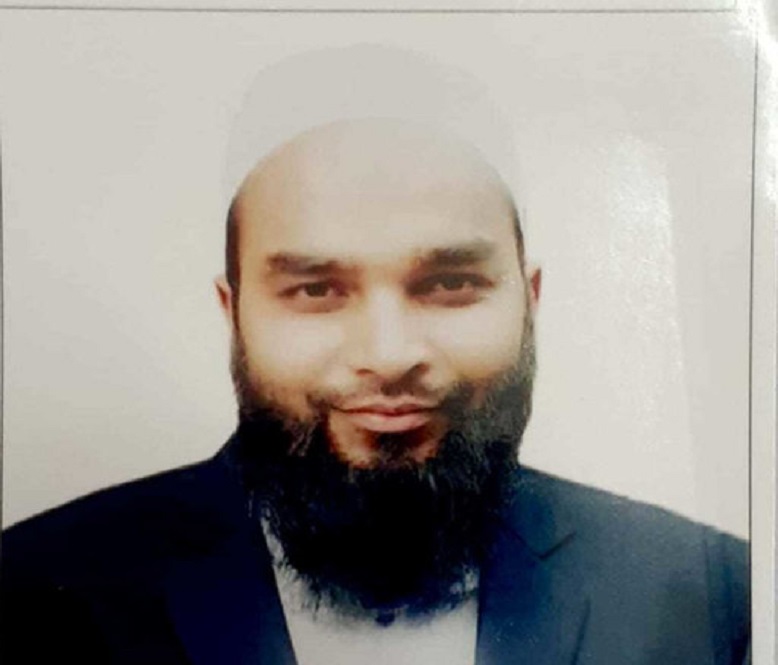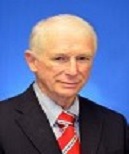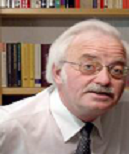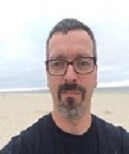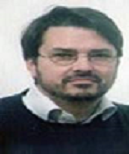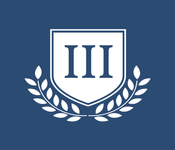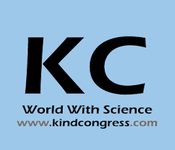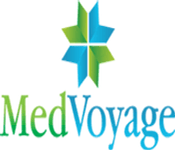Theme: Global Impact of COVID-19 on Stroke, Neurology and Cerebrovascular Diseases
Stroke Meeting 2022
- Welcome Note
- About Conference
- Sessions & Tracks
- Participation / presentation option
- Abstract Submission Guidelines
- VISA requirements
- Market Analysis
It is my great pleasure to welcome you on behalf of the International Congress on Stroke, Neurology and Cerebrovascular Diseases Organizing Committee, and to invite you to attend “13th International Conference on Stroke, Neurology and Cerebrovascular Diseases” to be hosted in Amsterdam, Netherlands, June 20-21, 2022
This conference goes to the heart of all matters relating to clinical trials, and it brings together the best scientists from around the world allowing you to hear and meet those at the forefront of our practice, and is being held in a fun location. There will be delegates not only from the UK or USA and other developed countries, but one feature is that delegates come from around the world.
It will feature highly respected internationally renowned speakers who will share, discuss, debate, and dissect significant new developments and scientific advancements that will impact the future of clinical trials, and related fields.
The Stroke Meeting 2022 should end with some strong take-home messages. To reach that goal we need multiple sources of evidence and clinical experiences. We need your work to be shared. The Stroke Meeting 2022 Conference is a unique opportunity to meet face to face with colleagues from different parts of the world. It is a major contribution to the development and consilience of knowledge.
We look forward to welcoming you to Amsterdam, Netherlands. We hope you will join us to make the "13th International Congress on Stroke, Neurology and Cerebrovascular Diseases" a memorable event!
Best Regards,
Organizing Committee
We are glad to announce the annual meeting “13th International Conference on Stroke, Neurology and Cerebrovascular Diseases" to be held in Amsterdam, Netherlands on June 20-21, 2022
Stroke Meeting 2022 will be operated by world-class experts in the field of Neurology and Neuroscience. International symposiums, B2B meetings, workshops will also be organised to discuss the specific topics in the field of Neurology and Neurosurgery, Epidemiology, Management and Prevention, Stroke and Cerebrovascular Diseases, Stroke Rehabilitation and Brain Hemorrhage, Ischemic Stroke and Transient Ischemic Attack, Cryptogenic Stroke and Antiplatelet Therapy and many more.
Why join?
We are pleased to invite you to the 13th International Conference on Stroke, Neurology and Cerebrovascular Diseases (Stroke Meeting 2022) to be held in Amsterdam, Netherlands June 20-21, 2022. Stroke Meeting 2022 will be a gathering of neurology researchers, scholars, academicians, practitioners, delegates, students and business personals to present all the updates in neuroscience. Join with us to learn, share and listen to the experts about their recent outcomes and their future expectation
Learn and share through Workshops and Interactive Sessions:
Workshops and interactive sessions involve extensive interaction between the presenters and delegate around an idea or hands-on experience of a practice. These interactive sessions may take the form of a panel, staged conversation or debate – all involving substantial interaction with the participants. Therefore a variety of sessions, keynote lectures, symposiums, workshops and poster presentations will allow you to share and present research to your colleagues from around the world.
Meet your subject matter experts:
Subject Matter Experts will lead you in current research & development. They help you in research queries, content, identify the objectives, and ensure your research is scientifically acceptably.
Networking/ round table discussions:
Stroke Meeting 2022 has its specially designed networking and round table discussion session, which brings together the clinicians, health professionals, and patients on the front lines of neurology to learn from each other and build professional networks and collaboration.
Neuroscience defines the systematic study of the mechanics of the central nervous system such as its structure, function, physiology, and genetics including by what means this can be related to understanding diseases of the nervous system whereas ‘Neurology’ is the branch of medicine that is concerned with diseases and disorders of the nervous system ranging from Alzheimer's disease, epilepsy, dementia & stroke, migraine respectively including neuroinfectious and brain tumours. Neurology includes diagnosing and treating conditions of the central, peripheral and autonomic nervous systems.
The field of neurology includes a broad range of subspecialties few of them are child neurology, clinical neurophysiology, endovascular surgical neuroradiology, hospice & palliative medicine, neuromuscular medicine, sleep medicine, pain medicine, vascular neurology, autonomic disorders, behavioural neurology & neuropsychiatry, geriatric neurology, neural repair & rehabilitation medicine, neuroimaging, neuro-oncology, psychosomatic medicine, neurosurgery.
Neuroscience Conferences organizes about 3000+ global events including international conferences, symposia, trade shows, workshops, exhibitions and science congresses in all the major scientific disciplines, including medical, pharmaceutical, technology, clinical, engineering, business management & life sciences globally. Conference Series is conducting several
Neuroscience/Psychiatric/Stroke events globally focus primarily on neurology, neurosurgery, neuro-oncology, and neuroimaging. These neurology conferences witness researchers, academic professors, pharmacists, physicians & surgeons who endeavour to disseminate their research experience to escalate the forthcoming research ideas.
Global Neurology Market embraces many therapeutics used for the treatment of several neurological disorders. The novel pipeline, patent expiry of blockbuster drug and new drug approval has affected the neurology market and it is estimated to grow through the forecast period. The biopharmaceutical companies are investing substantially in the development of advanced therapeutics for the treatment of neurological disorders/diseases. Government organizations are sponsoring research and development activities related to neurology research. These factors are impacting the neurology market positively coupled with the growing prevalence of neurological disorders. The global neurology market is growing due to an increasingly ageing population, expanding awareness regarding mental and neurological illness, increasing health insurance reforms and constant research and development in neurology by pharmaceutical companies. These factors and technological advances such as biomarkers, mobile applications, 3D printed drugs and wearable technologies used to monitor and treat patients diagnosed with neurological disorders are expected to drive the neurology drugs industry.
Session on Neurology and Neurosurgery
Neurology is the branch of medicine that deals with disorders of the nervous system, which include the brain, blood vessels, muscles, and nerves. most areas of neurology are the autonomic, central, and peripheral nervous systems. A physician who works within the field of neurology is named a neurologist. Neurosurgery is surgery of the nervous system. A physician who specializes in neurosurgery. Neurosurgeons aren't just brain surgeons, they're medically trained neurosurgical specialists who also can help patients affected by back and neck pain like some other illnesses starting from trigeminal neuralgia to go injury and paralysis agitans.
Session on Stroke and Cerebrovascular Diseases
The common mode of expression of stroke could be a relatively sudden occurrence of a focal neurological deficit. Strokes are broadly categorized as ischemic or hemorrhagic. Ischemic stroke is due to the occlusion of a cerebral blood vessel and causes cerebral infarction. Knowledge of the stroke syndromes, the signs, and symptoms that correspond to the region of the brain that's supplied by each vessel, allows a degree of precision in determining the particular vessel that's occluded, and from the temporal evolution of the syndrome, the underlying explanation for vascular occlusion is often deduced. Cerebrovascular disease refers to a group of conditions, diseases, and disorders that affect the blood vessels and blood supply to the brain. Cerebrovascular disease can develop from a spread of causes, including atherosclerosis, where the arteries become narrow; thrombosis, or embolic blood clot, which may be a grume in an artery of the brain or cerebral phlebothrombosis which may be a blood clot during a vein of the brain.
Session on COVID-19 Infection and Neurological Complications
Coronavirus disease-19 (COVID-19) pandemic continues to grow all over the world. Several studies are performed, that specialize in understanding acute respiratory syndrome and treatment strategies. However, there's growing evidence indicating neurological manifestations occur in patients with COVID-19. There are several similarities between neurological complications after SARS-CoV-1, MERS-CoV, and COVID-19, however, the scope of the epidemics and number of patients are very different. Reports on the neurological complications after and through COVID-19 are growing every day. Accordingly, comprehensive knowledge of those complications will help health care providers to be aware of these complications and diagnose and treat them timely.
Session on Stroke risk, phenotypes, and death in COVID-19
Stroke is relatively frequent among patients with COVID-19 and has devastating consequences across all ages. The interplay of older age, comorbid conditions, and severity of COVID-19 respiratory symptoms are associated with extremely elevated mortality. Acute cerebrovascular disease, particularly ischemic stroke, has emerged as a serious complication of infection by the severe acute respiratory syndrome coronavirus 2 (SARS-CoV-2), the etiologic agent of the Coronavirus diseaseâ€2019 (COVID-19).
Session 5: Stroke Rehabilitation and Brain Hemorrhage
A brain haemorrhage may be a variety of strokes. It's caused by an artery within the brain bursting and causing localized bleeding in the surrounding tissues. This bleeding kills brain cells. A stroke will cause lasting brain injury. people who survive a stroke have to be compelled to acquire skills they lost because of the injury. Rehabilitation will help them acquire those skills.
- The effects of a stroke depend on the area of the brain that was damaged. the categories of disabilities a stroke can cause include
- paralysis or problems controlling movement
- Pain and alternative issues with the senses
- problems using or understanding language
- problems with thinking and memory
- Emotional disturbances
Session 6: Ischemic Stroke and Transient Ischemic Attack
Ischemic stroke occurs when an artery to the brain is blocked. The brain depends on its arteries to bring contemporary blood from the heart and lungs. The blood carries oxygen and nutrients to the brain and takes away carbon dioxide and cellular waste. If an artery is blocked, the brain cells cannot create enough energy and can eventually stop working. A transient ischemic attack may be a stroke that lasts only some minutes. It happens once the blood supply to a part of the brain is briefly blocked. Symptoms of a transient ischemic attack are like alternative stroke symptoms, however, don't last as long. They happen suddenly and include
- Numbness or weakness, especially on one side of the body
- Confusion or trouble speaking or understanding speech
- Trouble seeing in one or both eyes
- Difficulty walking
- Dizziness
- Loss of balance or coordination
Session 7: Cryptogenic Stroke and Antiplatelet Therapy
In most cases, a stroke is caused by a blood clot that blocks blood flow to the brain. However in some instances, despite testing, the cause can’t be determined. Strokes while not a known cause is referred to as cryptogenic. That’s why it’s necessary to dig deeper for a definitive diagnosis. Collaboration by neurologists, cardiologists, electrophysiologists, and others might reveal the answers required to supply the targeted treatment for preventing recurrent strokes. Antiplatelets are a bunch of medicines that stop blood cells from sticking together and forming a blood clot. Whenever there's an injury in your body, platelets are sent to the site of the injury, wherever they clump along to make a blood clot. This stops the bleeding in your body.
Patients are usually given antiplatelets if they have a history of
- Coronary artery disease (CAD)
- Heart attack
- Angina
- Stroke or transient ischemic attacks (TIAs)
- Peripheral vascular disease (PVD)
Session 8: Risk factors, Diagnosis, Medications, and Recovery
History could include asking about what symptoms are present, once they began, and if they're rising, progressing, or remaining similar. Past medical history can look for stroke risk factors, medications, allergies, and any recent sicknesses or surgeries. Medication history is extremely necessary, particularly when the patient is taking anticoagulants warfarin, dabigatran, rivaroxaban, apixaban, enoxaparin. Physical examination includes assessing vital signs and patient wakefulness. A neurological examination is performed, typically using the standardized stroke scale. Heart, lungs, and abdomen are also assessed. specialized stroke centres -- hospitals that have the doctors, equipment, and resources to intervene quickly and treat strokes aggressively -- have shown to increase stroke survival similarly to patient function and recovery.
Session 9: Cardiovascular and Stroke Nursing
Cardiovascular disease may be a category of disease that involve the heart or blood vessels. CVD includes coronary artery diseases like angina and myocardial infarction different CVDs include stroke, heart failure, hypertensive heart condition, rheumatic heart condition, cardiomyopathy, abnormal heart rhythms, congenital heart condition, valvular heart condition, carditis, aortic aneurysms, peripheral artery sickness, thromboembolic sickness, and thrombosis.
- Physiological monitoring and maintenance of homeostasis
- Reduce morbidity and prevent mortality
- Prevent and observe lesion extension and cerebral oedema
- Prevent complications
- Understand stroke aetiology
- Assess potential/ Facilitate recovery
- Multi-disciplinary assessment and input
- Prevent recurrent stroke
Session 10: Heart Failure and Heart Diseases
Heart failure, generally called congestive heart failure, happens once your muscle doesn't pump blood likewise as a result of it ought to. certain conditions, like narrowed arteries in your heart or high force per unit area, gradually leave your heart too weak or stiff to fill and pump efficiently. cardiopathy describes a range of conditions that have an impact on your heart. Diseases under the heart disease umbrella include blood vessel diseases, like coronary artery disease; heart rhythm problems, and heart defects you're born with, among others. Shortness of breath once you exert yourself or when you lie down
- Fatigue and weakness
- Swelling in your legs, ankles, and feet
- Chest pain, chest tightness, chest pressure, and chest discomfort
- Shortness of breath
- Pain, numbness, weakness, or coldness in your legs or arms if the blood vessels in those components of your body are narrowed
- Pain within the neck, jaw, throat, upper abdomen, or back
Session 11: Cardiac Arrest and Recovery
A cardiac arrest usually happens without warning. If somebody is in cardiac arrest, they collapse suddenly and will be unconscious, unresponsive, and won't be respiration or breathing ordinarily - not breathing normally could mean they’re making gasping noises. Immediate recovery: when a cardiac arrest, you’ll are taken care of in a coronary care or medical aid unit. you may have been put in an associate-induced coma and kept asleep to permit your body to recover. Mid-term recovery: Doctors and cardiologists can need to figure out what caused the cardiac arrest. they will then recommend medication and treatment, such as a pacemaker or implantable cardioverter electronic device (ICD), to reduce the risk of it happening once more. long recovery: it'll take time to recover when a cardiac arrest, however, your doctor can support you throughout now. seek advice from family and doctors regarding what's going to happen once you go back and sensible matters, like driving.
Session 12 Geriatric Cardiology and Palliative Care
The geriatric cardiologist involves see the cardiovascular system from a perspective of an associated ageing body that's probably to be frail, noncompliance, disorganized, and confused, experiencing impaired operation of many organ systems, and damage from earlier diseases. Poor lifestyle choices, inadequate preventive health habits, consuming a good sort of frequently prescribed medications and in a situation wherever the parsimony of science now not applies, the prevalence of systolic and diastolic heart disease, cardiac arrhythmia, aortic stenosis, and electrical conduction defects will increase with age, leading to a major burden of cardiovascular disease. Palliative care is specialized medical care for people living with a serious health problem, this kind of care is concentrated on providing relief from the symptoms and stress of the health problem. The goal is to enhance the standard of life for each patient and the family. Palliative care is based on the needs of the patient, not on the patient’s prognosis. Its right at any age and any stage in a serious health problem, and it are provided along with curative treatment.
Session 13: Cardiac Nursing and Health Care
Cardiac nursing could be a speciality focused on preventing and treating conditions associated with the heart. Like alternative nursing specialities, a profession in cardiac nursing needs an understanding of normal cardiac anatomy and physiology, keen assessment and observance skills, vast information on cardiac disease and conditions, and in-progress education associated with counselled interference strategies and treatment options. Cardiac nurses may work in inpatient or outpatient settings, care for medical or surgical patients, and see patients through acute illness or help them manage chronic illness.
Session 14: Hypertension and Cardiovascular Research
Hypertension is often referred to as the silent killer as there aren't any directly visible symptoms that occur in patients. In several cases, the diagnosis is made only if alternative medical conditions associated with the heart, arteries, kidneys, or brain crop up. It’s thus essential to realize detailed info concerning hypertension and its types. Even as there aren't any symptoms, the causes of high blood pressure are unknown in virtually 90% of the cases. Factors like family history of high BP, age, gender, obesity, smoking, drinking, and an inactive mode among others are possible reasons for developing high blood pressure although they continue to be inconclusive. Cardiovascular is elating to the circulatory system, which includes the centre and blood vessels and carries nutrients and oxygen to the tissues of the body and removes carbon dioxide and alternative wastes from them. Cardiovascular diseases are conditions that have an effect on the heart and blood vessels and include hardening of the arteries, artery illness, heart valve illness, arrhythmia, heart failure, high blood pressure, hypotension, shock, endocarditis, diseases of the artery and its branches, disorders of the peripheral vascular system, and congenital heart disease.
Session 15: Neurophysiology and Neurodegeneration
Neurophysiology is broadly defined because of the study of nervous system function. In this field, scientists investigate the central and peripheral nervous systems at the extent of whole organs, cellular networks, single cells, or maybe subcellular compartments. A unifying feature of this wide-ranging discipline is an interest within the mechanisms that cause the generation and propagation of electrical impulses within and between neurons. This subject is vital not just for our understanding of the fascinating processes driving human thought but also for our ability to diagnose and treat disorders associated with nervous system malfunction. Neurodegeneration may be a complex multifactorial process that causes neuronal death within the brain and spinal cord, leading to brain and spinal cord damage and dysfunction.
- Alzheimer's disease
- Amyotrophic lateral sclerosis
- Friedreich's ataxia
- Huntington's disease
- Lewy body disease
- Parkinson's disease
- Spinal muscular atrophy
Session 16: Neurological Disorders and Neuroplasticity
Neurological disorders are diseases of the central and peripheral nervous systems. In alternative words, the brain, spinal cord, cranial nerves, peripheral nerves, nerve roots, autonomic nervous system, neuromuscular junction, and muscles. These disorders embody epilepsy, Alzheimer's sickness, and alternative dementias, vessel diseases also as stroke, migraine, and alternative headache disorders, multiple sclerosis, Parkinson's illness, neuro infections, brain tumours, traumatic disorders of the systema nervosum due to head trauma, and neurological disorders as a result of malnutrition. Neuroplasticity is that the brain's ability to reorganize itself by forming new neural connections throughout life. Neuroplasticity permits the neurons within the brain to catch up on injury and illness and to manage their activities in response to new situations or changes in their environment.
Session 17: Biomarkers and Clinical Research
A biomarker shows a biological molecule or gene this is used to efficiently and correctly examine pharmacologic responses, pathogenic procedures, and organic procedures. Also known as a molecular marker or signature molecule, biomarkers are detected in blood, other body fluids, and tissue. The global marketplace for biomarkers is gaining traction from several factors, along with prevalence and prognosis of life-threatening diseases like cancer, cardiovascular diseases, neurological disorders, etc., that's, in turn, raising the attention and growing the call for early prognosis, reducing the value of medical trials in numerous emerging economies, growing investment in studies and improvement via biotechnology and pharmaceutical companies, and new initiatives approximately biomarker research. On the other hand, the biomarkers market is facing challenges from high capital investments, the low price-advantage ratio with total investment, and badly suited regulatory and reimbursement systems.
Session 18: Neuroscience and Neuroimaging
Neuroscience is that the scientific study of the nervous system. It is an interdisciplinary science that combines and draws on multiple fields, from molecules to medicine. Neuroscience is that the study of how the nervous system develops, its structure, and what it does. Neuroscientists specialize in the brain and its impact on behaviour and cognitive functions. Not only is neuroscience concerned with the normal functioning of the nervous system, but also what happens to the nervous system when people have neurological, psychiatric, and neurodevelopmental disorders. Neuroscience is usually mentioned within the plural, as neurosciences. Neuroimaging is the discipline that deals with the in vivo depiction of anatomy and function of the central nervous system (CNS) in health and disease. Neuroimaging encompasses the varied techniques wont to image the structure of the brain, and it is relevant to some health science disciplines, where it's an excellent impact on the understanding, diagnosis, and treatment of neurological diseases.
Session 19: Alzheimer’s Disease and Dementia
Dementia and Alzheimer’s disease aren’t equivalent. Dementia is an overall term used to describe symptoms that impact memory, the performance of daily activities, and communication abilities. Alzheimer’s disease is that the most common sort of dementia. Alzheimer’s disease gets worse with time and affects memory, language, and thought. While younger people can develop dementia or Alzheimer’s disease, your risk increases as you age. Still, neither is considered a normal part of ageing. Although symptoms of the two conditions may overlap, distinguishing them is vital for management and treatment. Dementia may be a syndrome, not a disease. A syndrome may be a group of symptoms that doesn’t have a definitive diagnosis. Dementia may be a group of symptoms that affects mental cognitive tasks like memory and reasoning. Dementia is that the term applied to a group of symptoms that negatively impact memory, but Alzheimer’s may be a progressive disease of the brain that slowly causes impairment in memory and cognitive function. the exact cause is unknown and no cure is out there.
Oral presentation: Oral Presentations may include the topics from researches, theoretical, professional or private practices in a concise manner. Individuals with personal experience are also welcome to present personal experience or narratives which help others in everyday life.
Speakers with a 30-minute the slot should plan to speak for 20-25 minutes, and Keynote speakers should plan to speak for 40-45 minutes, with the remaining time to be used for questions and discussion by the Session Chair.
Workshop: For workshop presenters also, the topic of the talk will be the same as Oral presentation with more specialized techniques and detailed demonstration. The generalized time duration for a workshop presentation is about 45-50 minutes. Interested participants can join with their respective team and present the workshop with their research coordinators with special group waivers on registration.
Poster presentation: Student Poster Competition will be organized at Stroke Meeting 2022 conference is to encourage students and recent graduates to present their original research. Presenters will be given about 5-7 minutes to present the poster including questions and answers. Judges may ask questions during the evaluation of the presentation. This is an opportunity for young scientists to learn about the recent findings of their peers to increase their capacity as multidisciplinary researchers. Poster displays will be in hard copy format of 1x1 M long.
For more details regarding Poster Presentation and Judging Criteria view Poster Presentation Guidelines.
Webinar: The webinar presentation is designed for those interested attendees who cannot join in person due to schedule conflicts or other obligations. In this option, the presenter may record the presentation and their presentation will be presented in the Webinar presentation session.
E-Poster: e-Poster is also similar to the webinar presentation. In this session, their presentation will be published in the form of a poster in the conference website and the presenter abstract will be published in the conference souvenir and journal with DOI.
Exhibition: Stroke Meeting 2022 has the opportunity to exhibit the products and services from commercial and non-commercial organizations like Drug manufactures, Clinical Trial Sites, Management Consultants, Chemists, Pharmacists, Business delegates and Equipment Manufacturers.
To know more about exhibitor booth details and benefits visit WHY TO EXHIBIT WITH US?
Send your queries to stroke@europemeet.net
Advertisement: The conference program is a valuable resource that all attendees refer again and again as they navigate the conference. Advertising in the conference program is a great way to market and can help you secure long term business.
Send your proposal to stroke@europemeet.com to know the available advertisement options and prices
Sponsor Stroke Meeting 2022
Premium Sponsorship package
Additional Sponsorship package
Mail the program manager at stroke@europemeet.com or WhatsApp on (+4)4 1371 290000 to know more about the sponsorship packages.
How to submit an abstract/ article?
Submissions of abstracts are welcome in all topics related to Stroke Meeting 2022 Please see below for submission guidelines.
The entire accepted abstracts for the registered participants will be published in the Open Access conference supporting journal and conference souvenir.
- Abstracts can be submitted through the online link ABSTRACT SUBMISSION
- Abstracts must be submitted in English and should be within 250-300 words along with a biography of the presenter of 60-70 words
- Submissions are welcome in all topics related to Neurology & Neuroscience.
- Presenting the author shall provide the following details: Full name of the presenter, Affiliation details: department, institution/hospital, country, Phone number & E-mail address and photograph
- For Co-authors following details are required: Full names and affiliation details like department, institute/ organization name, country shall be included
- All abstracts will be reviewed by a review panel approved by the Stroke Meeting 2022 Conference Review Committee. The Committee’s decision is final.
- All presenters of accepted abstracts will be required to register and pay for attendance at the Conference.
Please note your affiliation and abstract title in both the final program and the journal will appear exactly as you submit it so please follow the guidelines provided as to the format required and the letter of acceptance does not imply any travel grant or any bursaries.
Next steps
Email confirmation for the submitted abstract will be sent upon successful acceptance of the abstract. If the abstract is accepted, presenters require to confirm the presenter/s and pay the applicable registration fee/s. Failure to do so may result in your paper being excluded from the Stroke Meeting 2022 conference program
How to complete registration?
To complete the registration, visit the ONLINE REGISTRATION. The following registration categories are available
The participants from University/ Academic backgrounds shall enrol their participation in the Academic category
Available Registration option under this category: Oral Presentation | Poster Presentation | Delegate Registration | Package A (includes your registration and 2 nights of accommodation) | Package B (includes your registration and 3 nights of accommodation) | Webinar
For the business person, shall enrol their participation in Business category
Available Registration option under this category: Speaker registration | Delegate Registration | Package A (includes your registration and 2 nights of accommodation) | Package B (includes your registration and 3 nights of accommodation) | Advertisement | Exhibitor
The participants who are still pursuing their education shall enrol their participation in the Student category.
Available Registration option under this category: Speaker registration | Poster presentation | Delegate registration | Package (includes registration and 2 nights of accommodation).
Apart from any above-mentioned category please drop a mail to stroke@europemeet.net for GROUP REGISTRATION, EXTRA NIGHT OF ACCOMMODATION, ADVANCE TOKEN AMOUNT PAYMENT, MORE THAN ONE PRESENTATION etc... These options are available on special request and discussion with the management
Stroke Meeting 2022 organizing committee hereby reiterates that we are NOT involved in VISA processing. We can assist by providing supporting documents like a Letter of invitation, Letter of Abstract Acceptance and Registration Payment Receipt.
You may be required to submit additional documents along with these documents to the embassy.
Letter of Invitation: The official Letter of Invitation is proof that your submitted paper and registration application are accepted by the conference committee board. It will be stated in English and may help you in your visa application.
* Only registered participants will get an official letter of invitation
* Attendees need to finish Registration & Authenticated information submission to get an official letter of invitation [i.e., Passport (Scan copy), DOB, Mobile Number, Physical Address and Photograph].
*Contact program manager for more information
• Official Letters of Invitations will be provided only to attend the conference.
**SHOULD YOUR APPLICATION BE DENIED, Stroke Meeting 2022 ORGANIZING COMMITTEE CANNOT CHANGE THE DECISION OF THE MINISTRY OF FOREIGN AFFAIRS, NOR WILL WE ENGAGE IN DISCUSSION OR CORRESPONDENCE WITH THE IND, MOFA OR THE EMBASSY ON BEHALF OF THE APPLICANT **
Summary:
Neurology is the branch of medicine concerned with the examination and analysis of disorders of the nervous system. The nervous system is a complex; practical one that regulates and coordinates body activities and it has two major divisions’ central nervous system and the peripheral nervous system including their coverings, blood vessels, and all effector tissue, such as muscle. The doctor who specialized in neurology is known as a neurologist. The neurologist is trained to investigate or diagnose and treat a neurological disorder that affects the brain, spinal cord, and nerves. Neurologists do not perform surgery if any patient requires surgery they refer to neurosurgeons. Many neurologists also have other training or interest in areas of neurology, such as stroke, epilepsy, neuromuscular, sleep medicine, pain management, or movement disorders. In some times neurologists may order some additional diagnostic tests like imaging studies such as computed axial tomography (CAT) scans, magnetic resonance imaging (MRI), and ultrasound of major blood vessels of the head and neck.
Importance & Scope:
The scope of this report is broad and includes therapeutics used in the treatment of neurological disorders. The market analysis of neurology represents the largest and untapped market in the medical sector. This estimated market analysis is based on the probability of approval and sales of products in late-stage development, demographic trends and marketing of products. Emerging markets once again helps to boost revenues. CNS therapeutics covers approximately 15% of total pharmaceutical sales, almost $30 billion worldwide. The global market for neurology should grow from $33.3 billion in 2019 to $39.4 billion by 2024 at a compound annual growth rate (CAGR) of 3.5% for the period of 2019-2024. The international neurology market consists of various therapeutics used for the treatment of different neurological disorders, the novel pipeline, patent expiry of blockbuster drugs and new drug approval have affected the neurology market and it is estimated to grow during the forecast period. The biopharmaceutical companies are financing significantly in the development of innovative therapeutics for the treatment of neurological disorders. Government organizations are funding research & development related to neurology research. These factors are influencing the neurology market positively coupled with the growing prevalence of neurological disorders. The improved government funding in neurology research and an ever-growing demand for research centred on drug discovery for enhancement of novel therapies in neurological disorders are driving the growth of the neurology market. The global market for the psychotic disease is predicted to grow at a slow rate during the forecast period.
The slow progress is attributed primarily to the loss of patent exclusivity of branded drugs and the emergence of generic drugs. Manufacturers of branded drugs are expected to experience a decline in sales revenue due to the penetration of low-cost generic drugs in the market, which is likely to influence the growth of the market for antipsychotic drugs. New approaches for the treatment of neurology related indications were pursued by pharmaceutical companies. This new drug with a novel method of action or improved delivery system will present a powerful new option to currently prescribed neurology medicines. The global neurology market is growing due to a rise in the aging population, increased awareness regarding mental & neurological illness, increasing health insurance reforms and constant research & development in neurology by pharmaceutical companies. These factors along with technological advances such as 3D printed drugs, biomarkers, wearable technologies and mobile applications used to monitor and treat patients diagnosed with neurological disorders are expected to drive the neurology drugs industry. For market estimates, data is provided for 2018 as the base year, with forecasts for 2019 through 2024. Estimated values are based on drug manufacturers' total revenues. Projected and forecasted revenue values are in constant US dollars, unadjusted for inflation.
Conference Highlights
- Neurology and Neurosurgery
- Stroke and Cerebrovascular Diseases
- COVID-19 Infection and Neurological Complications
- Stroke risk, phenotypes, and death in COVID-19
- Stroke Rehabilitation and Brain Hemorrhage
- Ischemic Stroke and Transient Ischemic Attack
- Cryptogenic Stroke and Antiplatelet Therapy
- Risk factors, Diagnosis, Medications, and Recovery
- Cardiovascular and Stroke Nursing
- Heart Failure and Heart Diseases
- Cardiac Arrest and Recovery
- Geriatric Cardiology and Palliative Care
- Cardiac Nursing and Health Care
- Hypertension and Cardiovascular Research
- Neurophysiology and Neurodegeneration
- Neurological Disorders and Neuroplasticity
- Biomarkers and Clinical Research
- Neuroscience and Neuroimaging
- Alzheimer’s Disease and Dementia
To share your views and research, please click here to register for the Conference.
To Collaborate Scientific Professionals around the World
| Conference Date | June 20-21, 2022 | ||
| Sponsors & Exhibitors |
|
||
| Speaker Opportunity Closed | Day 1 | ||
| Poster Opportunity Closed | Click Here to View | ||
Useful Links
Special Issues
All accepted abstracts will be published in respective Our International Journals.
- International Journal of Neurorehabilitation
- Journal of Neurological Disorders
- Journal of Cardiovascular Diseases & Diagnosis
Abstracts will be provided with Digital Object Identifier by







